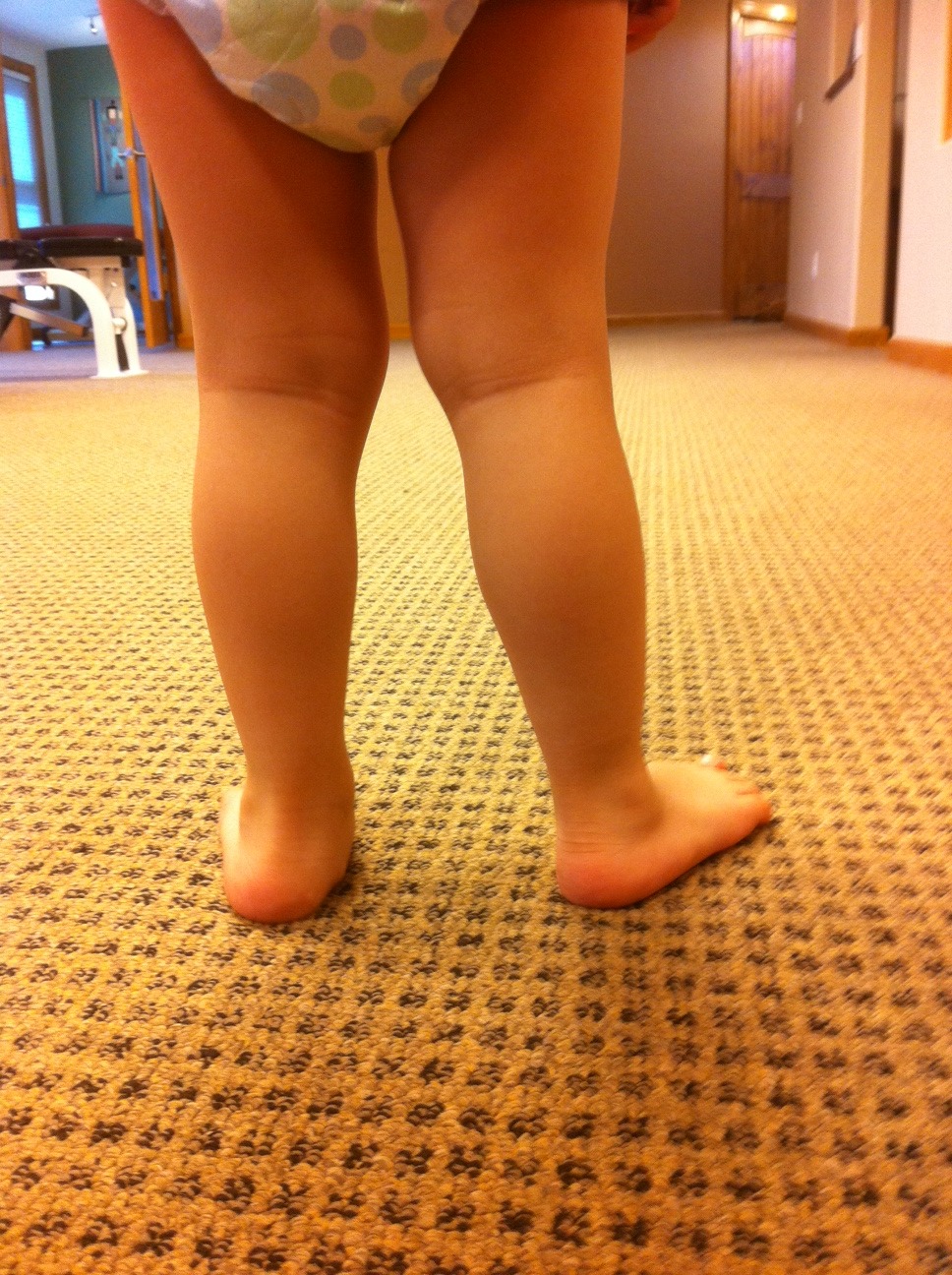Quiz: Let’s see how your blog reading has been going.
These 5 photos are of a 2.5 year old child brought into your office for evaluation by his father. They have been seen by another practitioner who has given him orthotics with full length varus posts to wear.
- What do you see?
- What is your assessment?
- What do you tell the parent?
In the standing views, what stands out?
- a moderate rearfoot (calcaneal) valgus (ie. rear foot medial heel collapse)
- the flattened medial longitudinal arches of the foot ( ie. a little flat footed)
- the genu valgus (ie. knees are a little “knock knee’d”)
- he bears weight separately on each lower extremity as you can see from the pictures. He never bears weight on both limb symmetrically, there is much weight bearing shifting meaning there is always a dominant limb bearing most of the weight.
- the knees face inward in the standing position
- the feet point outward (with the knees straight) in the supine position
did you see all of these?
What is your assessment?
1, 2) pes planus and hyperpronation are the norm for children under 6 years of age
3) genu valgus is not abnormal in children, with many presenting maximally at age 3, and usually resolving by age 9 (see our post here)
4) he bears weight separately on each lower extremity (L>R from rear, R>L from front) so there probably is not a leg length discrepancy. This is often a hip-core stability issue and as fatigue sets in weight bearing shift is automatized.
5,6) This child has external tibial torsion. As seen in the supine photo, when the knees face forward, the feet have an increased progression angle (they turn out). We are born with some degree / or little to none, tibial torsion and the in-toeing of infants is due to the angle of the talar neck (30 degrees) and femoral anteversion (the angle of the neck of the femur and the distal end is 35 degrees). The lower limbs rotate outward at a rate of approximately 1.5 degrees per year to reach a final angle of 22 degrees….. that is of course if the normal derotation that a child’s lower limbs go through occurs timely and completely.
What do you tell the parent?
1,2) Although research shows that wearing arch supports (navicular wedge or “cookie”, not a full varus wedge as was the case here) can speed development of the the arches, they will in fact most often develop regardless of supportive footwear or support. Many studies show that footwear impairs muscular development of the foot. One study showed that arch supports in children prevent derotation of the talar head and promote development of a Rothbart Foot Type. How about some flexible shoes (or no shoes) for the boy? (need to review the Rothbart foot type ? click here for one of our very first blog posts on the topic)
3. We will measure the genu valgus and track it every 6 months to make sure it is regressing. If it persists or becomes worse, we may address it then. How about having your kid walk barefoot?
4. no worries, he is resting each side as the other fatigues. Endurance development takes time, just like marathon training. For gosh sake, the kid is 2.5 years old. Give him a break !
5,6) We will measure his progression angle and degree of torsion every 6 months (along with the genu valgus). This is normal up to reaching skeletal maturity.
Well, how did you do?
Corrective exercises are always nice, but when is too soon? Can their immature nervous system handle it ? CAn they comprehend the exercise ? Sometimes turning them into a game and taking what you can get is good enough to help promote healthy limb derotation. Walking with the toes up helps develop arch independence and helps to teach the brain about the foot tripod. But at 2.5 years old, good luck expecting more than that.
The Gait Guys: two handsome bald guys (one by genetics, and one by aspiring choice) aging gracefully and promoting foot and gait literacy, one case at a time.




















